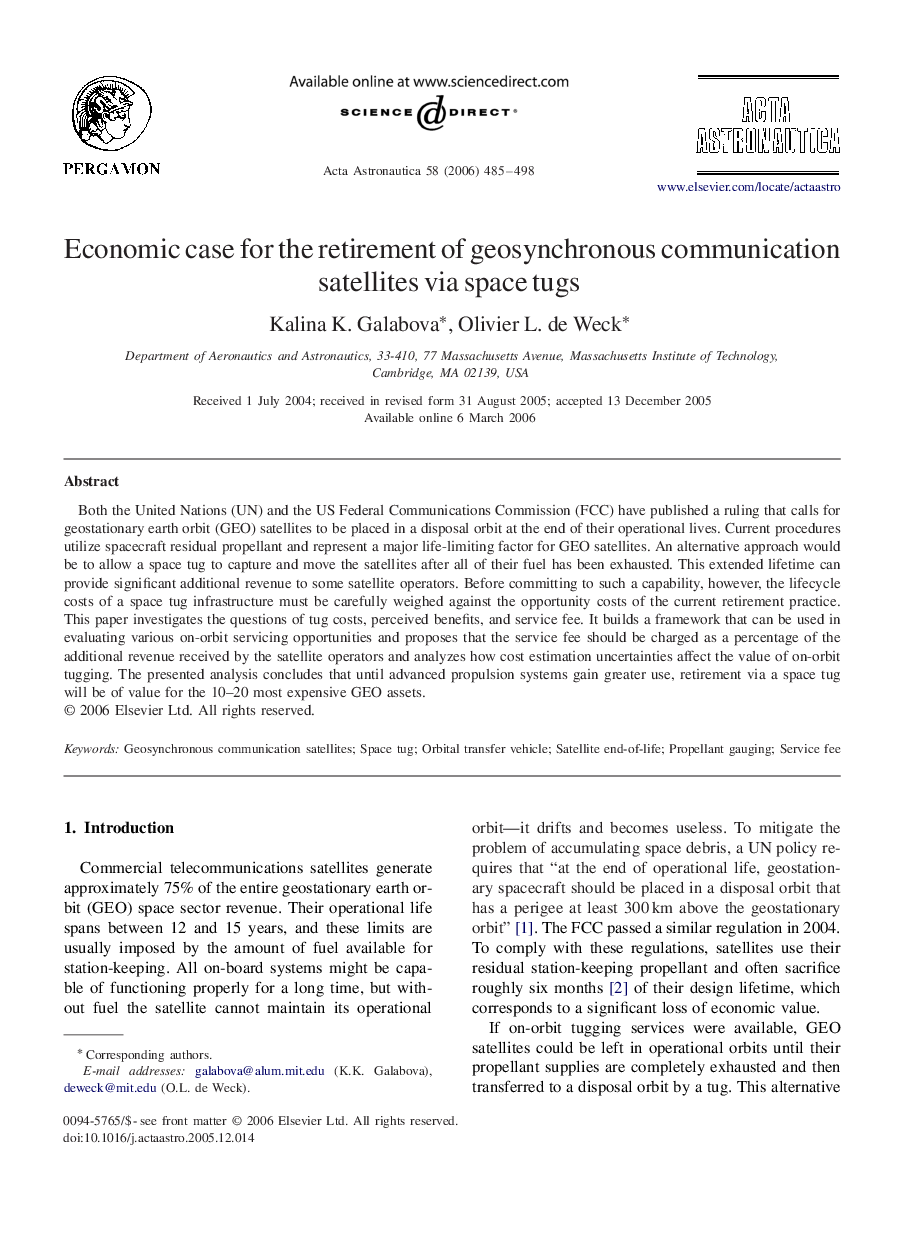| Article ID | Journal | Published Year | Pages | File Type |
|---|---|---|---|---|
| 1717289 | Acta Astronautica | 2006 | 14 Pages |
Both the United Nations (UN) and the US Federal Communications Commission (FCC) have published a ruling that calls for geostationary earth orbit (GEO) satellites to be placed in a disposal orbit at the end of their operational lives. Current procedures utilize spacecraft residual propellant and represent a major life-limiting factor for GEO satellites. An alternative approach would be to allow a space tug to capture and move the satellites after all of their fuel has been exhausted. This extended lifetime can provide significant additional revenue to some satellite operators. Before committing to such a capability, however, the lifecycle costs of a space tug infrastructure must be carefully weighed against the opportunity costs of the current retirement practice. This paper investigates the questions of tug costs, perceived benefits, and service fee. It builds a framework that can be used in evaluating various on-orbit servicing opportunities and proposes that the service fee should be charged as a percentage of the additional revenue received by the satellite operators and analyzes how cost estimation uncertainties affect the value of on-orbit tugging. The presented analysis concludes that until advanced propulsion systems gain greater use, retirement via a space tug will be of value for the 10–20 most expensive GEO assets.
